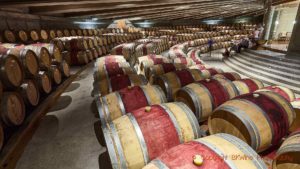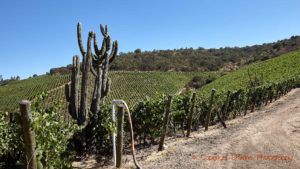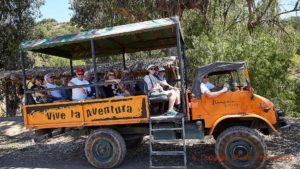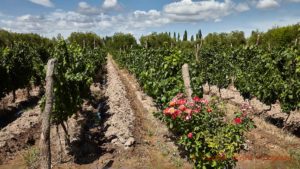I love to visit vineyards. I say this because very often when you are on a wine tour you get to see the fermentation tanks and the barrel cellar but not the vineyard. This is a pity.
All wine producers nowadays tell us that good quality grapes is the most important thing of all when it comes to making good wines. As Jorge Riccitelli, winemaker at Norton, points out: 100 % of the quality of the wine is made in the vineyard. Maybe a slight exaggeration, but nevertheless, walking in the vineyard with a vineyard manager or a winemaker is fascinating. So at recent wine tour visits to Mendoza I have made a point of asking for a tour out in the fields. And I have learned a lot.
My first guide is Sebastian Zuccardi. Their family estate is beautiful and one of the largest in Mendoza. “Frost och hail are our biggest problems”, says Sebastien. He shows me the part of the vineyard where they have nets protecting the vines from hail. “We have nets protecting around 60 % of the vineyard. It is a big investment, 10 000 USD per hectare, and we have to change them every 10 years.”
Part of the Zuccardi vineyard is organic. Not all yet, says Sebastian, weed control is too complicated. We are standing in a vineyard planted with Bonarda grapes. “Bonarda needs a long season so it is harvested late. Over there we have Malbec, our most important grape, and a grape much influenced by the terroir.“
Terroir is soil but not only, says Sebastian. It also includes how the vineyard is worked. How it is pruned and irrigated for instance. The Zuccardi family look for concentration in their wines and they need to work the vineyard accordingly. “We want to make powerful wines but we also want elegance. We make wines for drinking, not for competitions.“
We end the visit in the garden, by the traditional empanada clay oven. Empanada, mostly filled with ground beef and onions, is a delicious Mendoza speciality. You easily eat too many and forget the tasty grilled beef that usually follows…
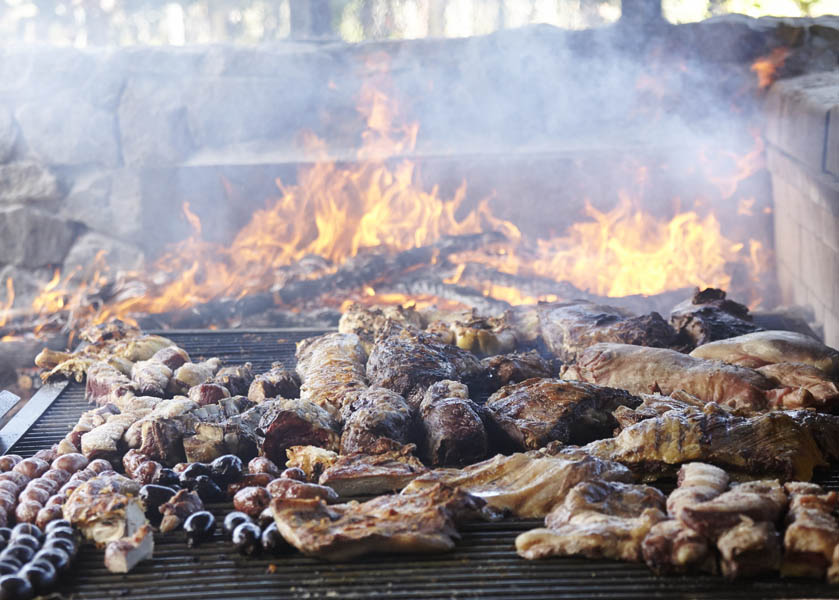
I continue to explore the vineyards of Mendoza. My next guide is Guillermo Yaciofano, vineyard manager at Trapiche, one of the oldest and most famous wineries in Mendoza. Guillermo stresses the importance of water. Without the water there would be no vineyards in Mendoza. And the melting water from the Andes provides a never ending (?) reservoir of irrigation water. Trapiche uses sophisticated methods to decide the amount of water they need to give to their vines. “We like to stress the vines a little bit, it helps the quality”, he says.
“The climate has a big influence on the wine”, he continues. “It is warm, often hot, in Mendoza and for certain grape varieties we now look for cooler sites, for instance on higher altitudes.”
Which variety to plant is decided according to the terroir. Where we are standing right now there are a lot of stones of all sizes. “This is a poor soil, good for Merlot”, says Guillermo.
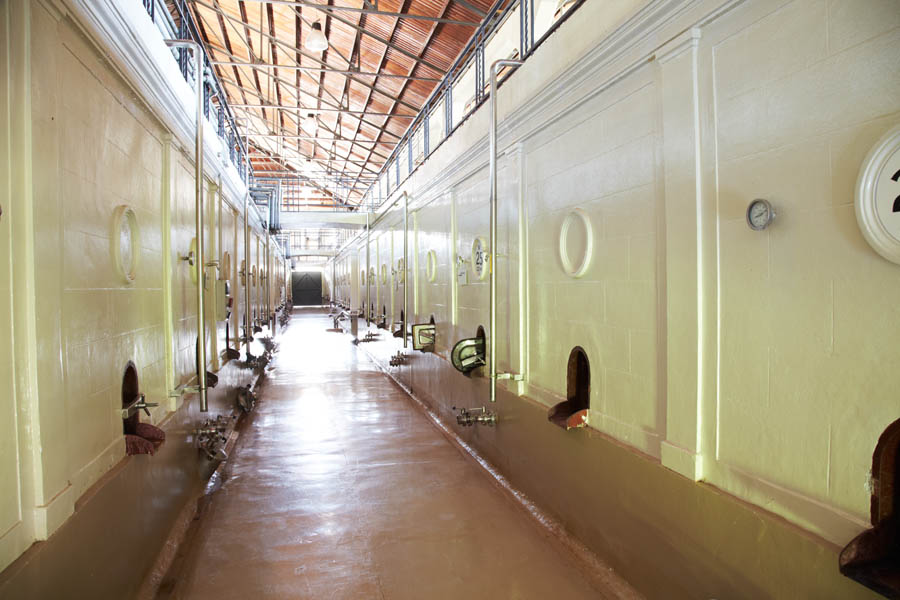
You also have to adapt the irrigation to soil and to grape variety. Guillermo tells me that Trapiche uses aerial photos of the vineyards to detect problems like certain diseases, to check vigour and canopy balance. Often they want to avoid too much sun so new blocks are planted with east-west or north-west orientation which gives less sun exposure.
Everyone I talk to agrees on the importance to irrigate. It is absolutely necessary. But it is just as necessary to give only just the right amount of water to the plants. Most producers today in Mendoza consider drip irrigation as being the best method. But they sometimes use flood irrigation because the roots of certain old vines are adapted to flood irrigation.
My next stop is Bodega Norton with its superb view over the Andes. “We have always been terroir-oriented” says winemaker Jorge Riccitelli. “For many producers here in Mendoza terroir is a new concept.” Jorge tells me that they analyse the soil before they decide which variety to plant. Climate, of course, is also part of the terroir.
“What makes Mendoza so special”, says Jorge, “are the big differences in temperature during day and night. At harvest time we pick the grapes in the morning at really cool temperatures even though daytime temperatures can reach 25-30 degrees C. This gives us balance in the wine. “
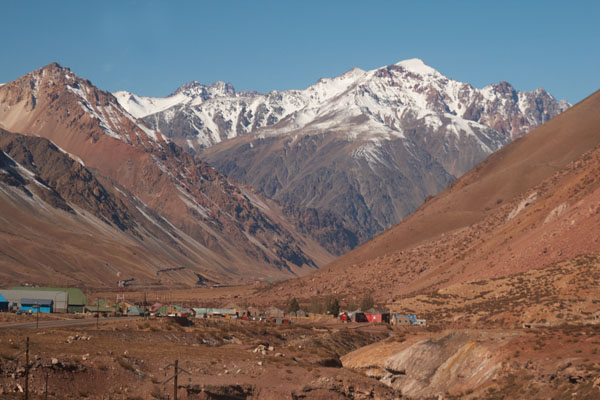
German Berra, winemaker at Finca Flichman, also talks about the importance of not giving too much water to the plants. “We measure the evaporation and know approximately how much water the plant needs. “
Everyone talk about water but also about hail. This is considered the biggest problem in the vineyard. This is a hail zone, says German Berra, when we stand in the vineyard admiring beautifully ripe grapes. “We get hail the size of ping pong balls, sometimes we lose not only grapes but the whole vine. Nets are expensive but the investment is justified if one harvest is saved.”
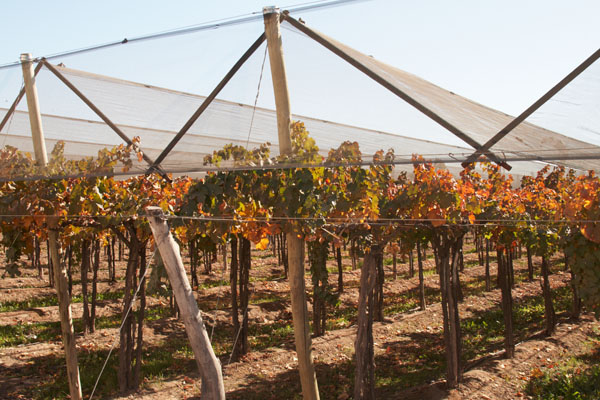
Do the nets take away sunlight from the grapes, I ask Gabriel Bloise at Chakana. “Maybe 10 % but it is not a big problem, we have enough sun as it is”. Chakana is new project which started in 2002. They have 20 hectares of vines and they are right now converting to organic and biodynamic culture. “Eventually we will have our own cows for manure and sheep to help with weed control in the vineyard”, says Gabriel Bloise.
Vineyard visits, in Mendoza or elsewhere, are fascinating and are preferably ended with a glass of Torrontès. Aromatic with a nice, fresh acidity, it is the perfect aperitif. The empanadas are served and the asado will soon be ready.
.
In the vineyards in Mendoza you also have wonderful views over the Andes, so there is an added attraction to take a walk. You will really get to know the wines of Mendoza and its gastronomy on a wine tour to Argentina and Chile with BKWine. The next wine tour to South America is in February.
Travel to the world’s wine regions with the experts on wine and the specialist in wine tours.
An unforgettable wine experience.

